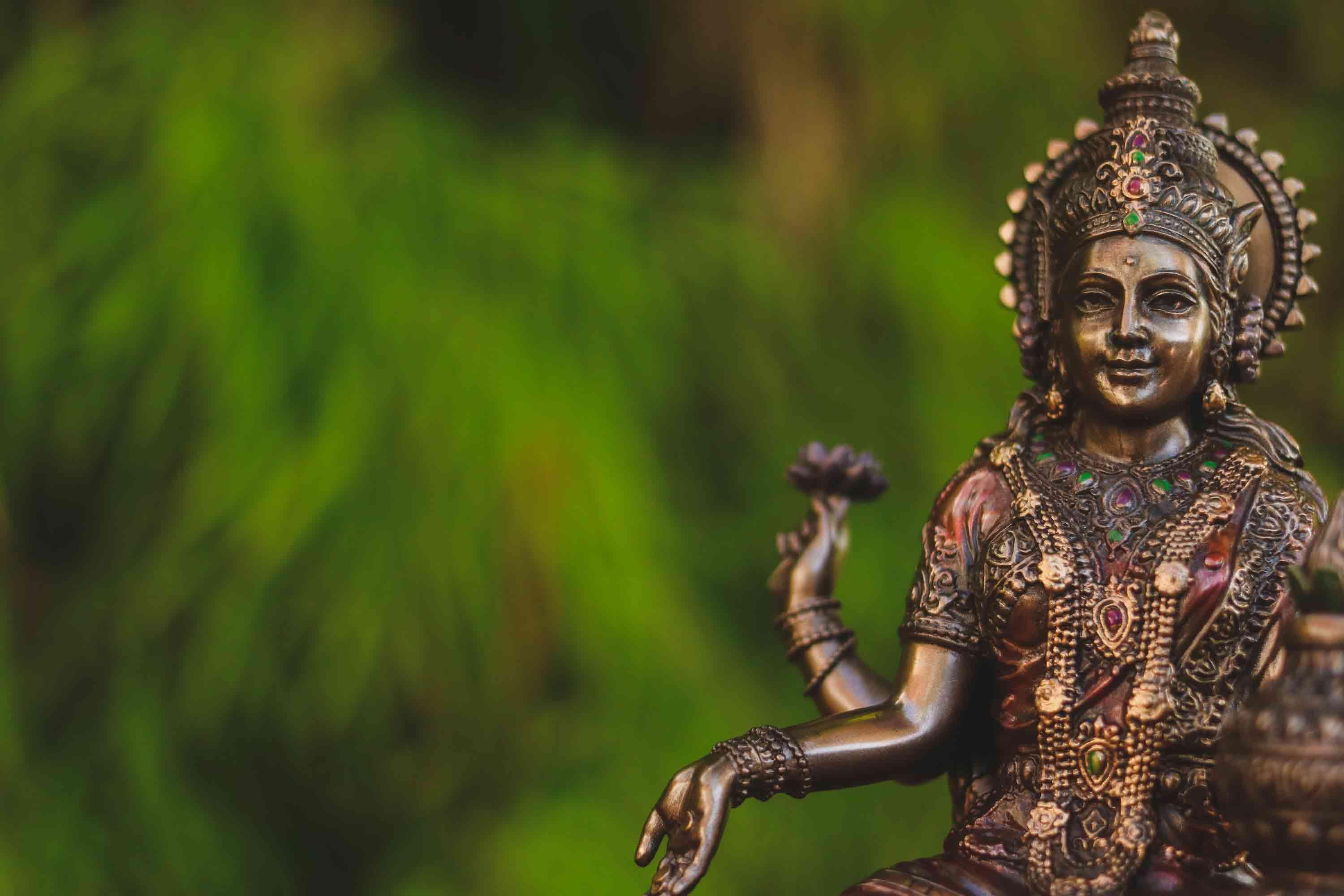With its estimated emergence some five thousand years ago in the Indian subcontinent, Hinduism is the largest polytheistic religion in the world. Called by its practitioners Sanata Darma which, in Sanskrit, means "the eternal (perpetual) dharma (law)" . Hinduism preaches the belief in a "Universal Soul" , having its foundation based on the Vedas , which are the sacred books written by Brahma , the Supreme God of the religion whose attributes are represented by the triad of the three powers: creation, conservation and destruction . Considered one of the oldest mythologies in the world, Hinduism continues to be active and has a great socio-cultural effect in India .
Hindu Mythology has both male and female symbols, which bring the representation of the supreme universal power. Shakti is the female source of power in the universe, thus being the greatest portrayal of female goddesses in Hinduism . Also called Adi Shakti or Adi Parashakti ("supreme energy"), she receives the epithet "The Great Divine Mother". Associated with creation and birth , this goddess also carries the active force of transformation. Shakti is the world's cosmic energy and, in its many facets (like Kali , for example) makes us honor all the power of female energy . Thus, Hinduism offers us great spiritual and cultural richness , having in its mythology legendary figures that exalt female strength and power, through transgression , overcoming , affection and, above all, faith .
Sita, Rama and the potency of genuine love

Presented in Hindu Mythology as one of the avatars of Sri Lakshmi , Sita is the goddess who carries with her the powers of prosperity , happiness , fortune and success . Sita was Rama 's wife and together they starred in one of the most beautiful love stories narrated in the Ramayana . The romance that inspires courage is celebrated in India with Diwali , the Festival of Lights , where the victory of light against shadows and knowledge over ignorance is celebrated. Cultivating environments decorated with the presence of Sita and Rama , reminds us of the genuine strength of love and exalts the union , through the manifestation of the loving energy that they exude together.
Kali and the power of time

With her four arms, she evokes Creation , Preservation , Destruction and Salvation . Usually depicted with a fierce and fearful expression to many, Kali is also known as the Mother of Darkness. It usually appears naked, which alludes to its transparent nature . Her necklace with fifty human heads references the fifty letters of the Sanskrit alphabet, thus symbolizing infinite knowledge .
Its three eyes represent past, present and future, making reference to time . That which is manifested in his name, Kal in Sanskrit, means "time". This is the great teaching that this entity transmits to us. Valuing patience , trusting the power of time and the fluidity of the natural order of perseverance . Like time, Kali is both compassionate and destructive. It brings wisdom through gains, but also through losses.
Saraswati's Art and Wisdom

Always illustrated sitting on a lotus flower and playing a sitar , a classic Indian musical instrument, Saraswati is the protective goddess of musicians, writers, artisans and artists in general. Known as the goddess of expression , aesthetics , wisdom and the arts , her most present symbols are the swan and the white lotus , which refer us to the ideals of peace and purity .
Also known as Bharati (eloquence) and Shatarupa (existence), she is said to be the mother of the Vedas . Saraswati appears in the Rigveda as the creator of Sanskrit and in her first appearance presents Ganesh with brushes, in order to stimulate his artistic gifts and creativity. Her name means "elegant" and "fluent" and she is traditionally enshrined by the Hindu people on Savitu-Vrta day, celebrated 16 May every year.
Lakshmi, the goddess of abundance and fortune
At the end of our path through the intense feminine iconography present in Hinduism , we have Lakshmi . Known as the goddess of prosperity , abundance and fortune . Always being represented sitting on a lotus flower , one of her hands carries a pitcher , from which gold coins flow, representing material wealth . Invoked by Hindus who are in search of wealth, whether material or spiritual, Lakshmi can be worshiped on full moons , through flowers , coins , incense and glasses of water next to her figure.
Lakshmi derives from Laksya which, in Sanskrit, means "goal" . This goddess encourages her faithful to seek wealth, knowing how to enjoy and honor the fruits of their work. Also known as the goddess of the home and present in most homes in India , Lakshmi embellishes Zen decorations with her abundant beauty .
Find these Hindu female deities in our online store and radiate good vibes in your home decor!
Namaste!
Victory Michels - Art & Tune












